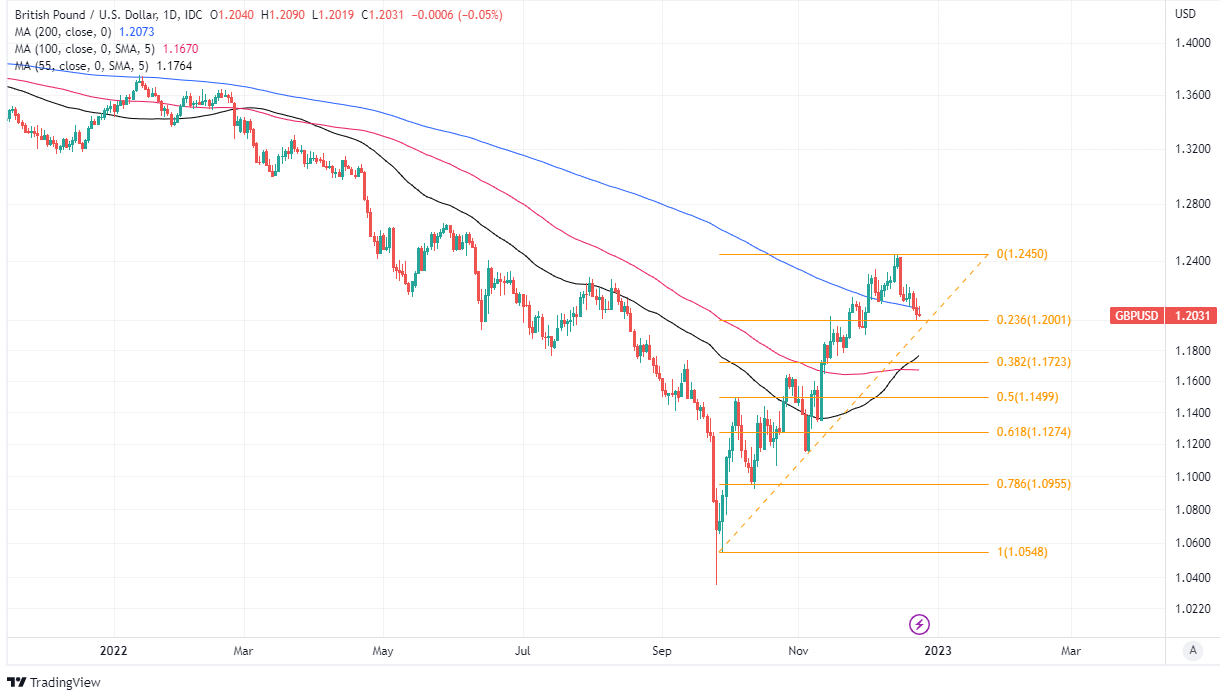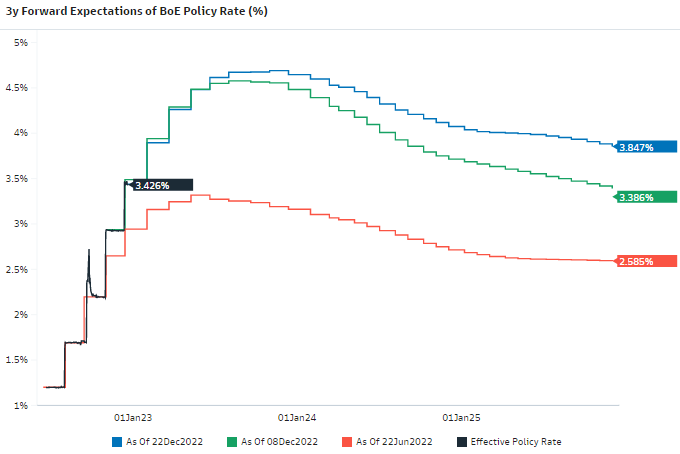British Pound Testing Key Levels Vs Euro and Dollar as Questions of Soul Linger
- Written by: James Skinner
-
"The soul of money is trust. So the question becomes: which institution is best placed to generate trust" - Bank for International Settlements

© Bank of England
Pound Sterling beat a retreat from the Euro, Dollar, and other currencies ahead of the festive holiday but could be choppy and may even fall further going into the end of a year in which further ruptures and conflicts between countries and peoples have seen questions asked about the soul of money itself.
Sterling edged lower against a seemingly-overvalued Euro and what could be a fairly priced U.S. Dollar on Friday but reduced activity and resulting volatility might yet see it pushing lower against both currencies by year-end.
"GBP/USD and EUR/GBP are both sitting right on top of their key levels," says Brad Bechtel, global head of FX at Jefferies.
"EUR/GBP 0.8800 [GBP/EUR: 1.1366] and GBP/USD 1.2075 are both key, and we are pinned right on top of both as the market remains reluctant to challenge these levels ahead of the holidays," he adds in a Friday market commentary.
While there are public holidays in many parts of the world Monday, it's possible there will be some choppy trade through to January when Northern hemisphere markets reopen with a likely focus on which central banks are anywhere near close to having done enough to bring down inflation.
 Above: Pound to Dollar rate shown at daily intervals with selected moving-averages and Fibonacci retracements of late September recovery indicating possible areas of technical support. Click image for closer inspection.
Above: Pound to Dollar rate shown at daily intervals with selected moving-averages and Fibonacci retracements of late September recovery indicating possible areas of technical support. Click image for closer inspection.
"The combination of a Bank of England that wants to soft-pedal further tightening and the promises of fiscal austerity from the Sunak-Hunt duo are a powerful negative for sterling as we look ahead into the New Year," says John Hardy, head of FX strategy at Saxo Bank.
"The FX fundamentals are entirely the opposite for the euro, as the ECB attempts a maximum hawkish stance as it recognizes the risks that the fiscal impulse can keep inflationary pressures elevated from here," Hardy adds.
Notably, whether market expectations for Bank Rate are high enough depends at least in part on if the Bank of England was right to forecast in November that UK inflation would fall rapidly from double-digit percentages next year.
The BoE did warn that risks to its forecasts are on the upside but the implications for Sterling in the above scenario are more uncertain than normally given widespread suggestions and some indications of both foreign and domestic investors recently questioning the credibility of the UK government and country while being squeamish about Pound Sterling.
Credibility questions, it could be argued, are probing at the soul of money itself and have been asked throughout the 'Fiat' or 'printed' money era.
"The soul of money is trust. So the question becomes: which institution is best placed to generate trust?" says Agustin Carstens, general manager of the Bank for International Settlements, in a January 2022 speech at the Goethe University's Institute for Law and Finance.
Above: Changes in market-implied expectations for BoE Bank Rate. Source: Goldman Sachs Marquee. If you are looking to protect or boost your international payment budget you could consider securing today's rate for use in the future, or set an order for your ideal rate when it is achieved, more information can be found here.
'Fiat' or 'printed' money sees natural resources and other items including labour traded for promissory notes written in places where self-interest is supposedly the rule and quantitative easing was popular, until all of a sudden it wasn't.
Oil-producing countries might say there is no coincidence between the pandemic period quantitative easing, rising commodity prices and the present levels of inflation, though they might choose to call this "inflation" a form of monetary debasement instead.
Whether or not they do the latter would probably depend on how good the BoE's inflation forecasts are and what it does with Bank Rate thereafter.
Meanwhile, it might not be any coincidence either that when trading between roughly 1.20 and 1.2450 in recent weeks, the Pound-Dollar rate has been alternating between a -12.5% loss for 2022 and an -8.4% loss, which are a close reflection of the announced inflation rates minus a Bank Rate of 3.5%.
That might be something like a short-term 'fair value' for Sterling against the greenback though the same exercise applied to the Euro suggests the Pound to Euro rate should be trading somewhere between 1.1794 to 1.1894.
Above: Pound to Euro rate shown at daily intervals with selected moving averages and Fibonacci retracements of late September recovery indicating possible areas of technical support. Click image for closer inspection.








